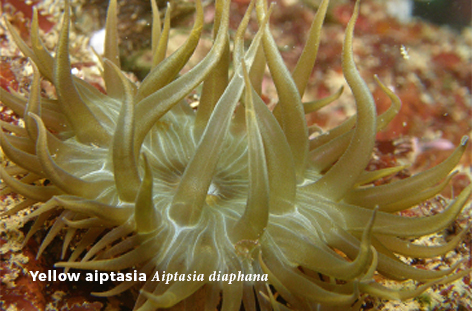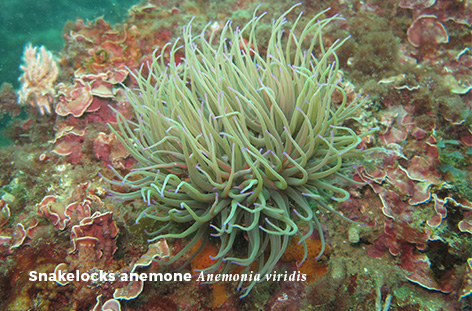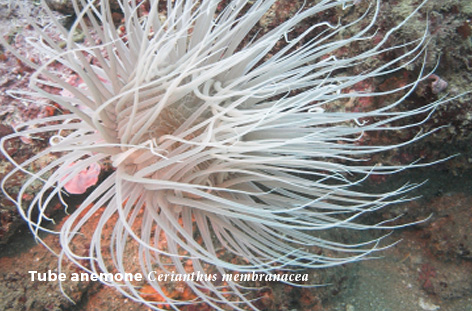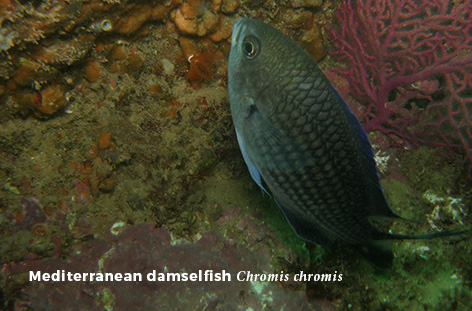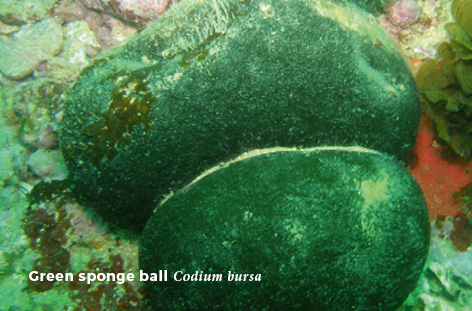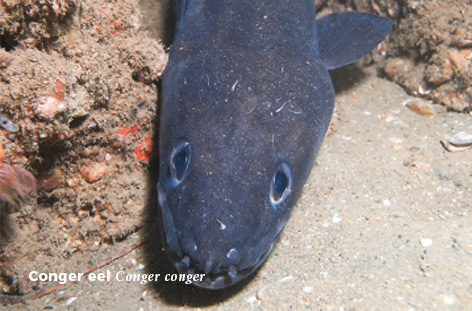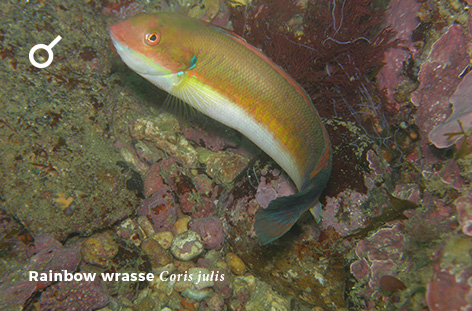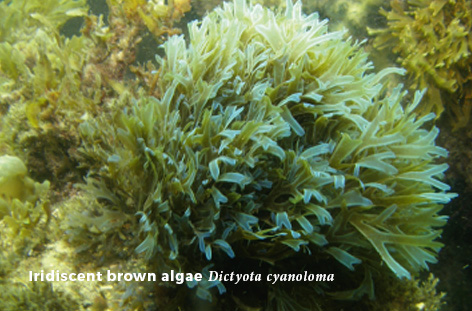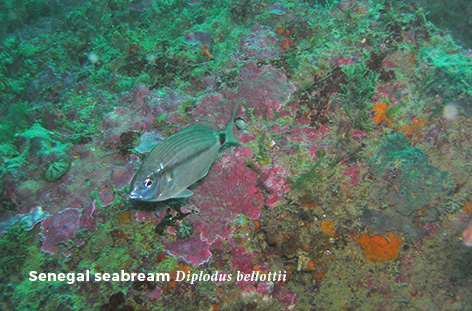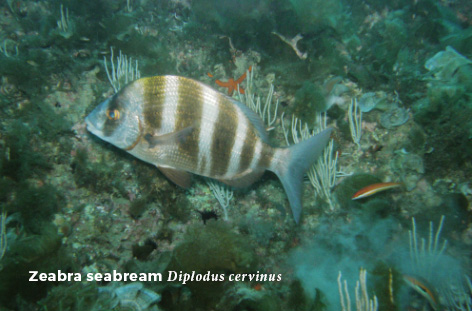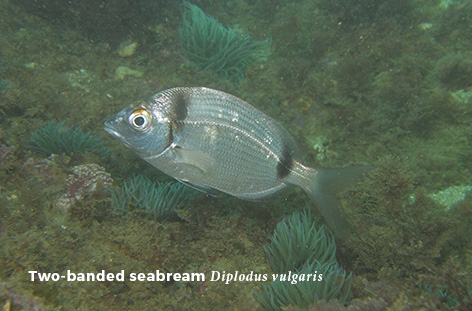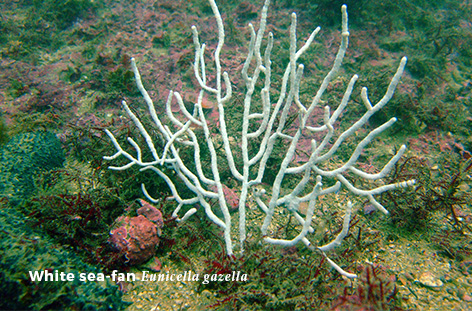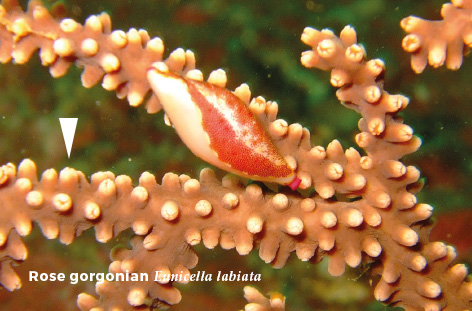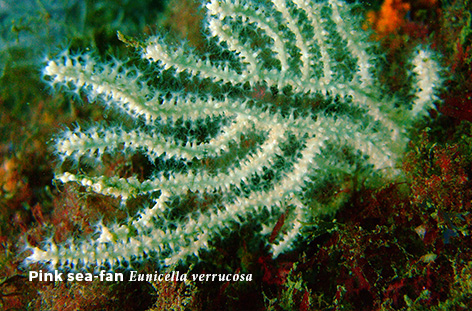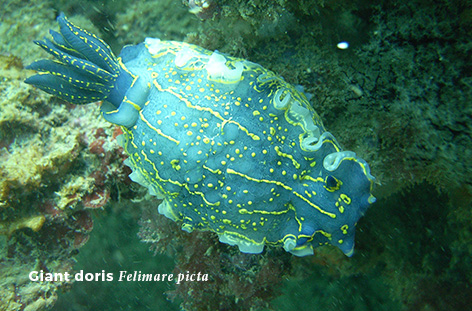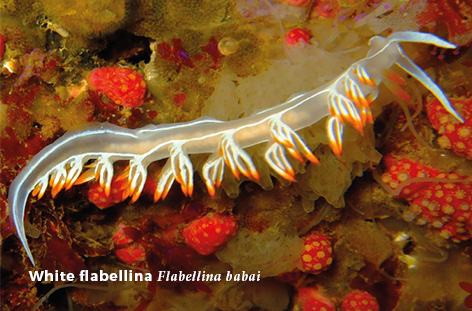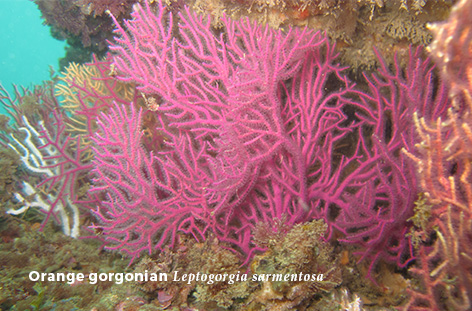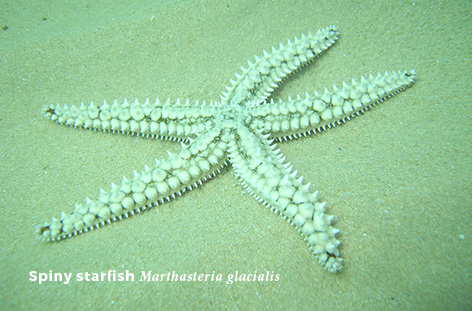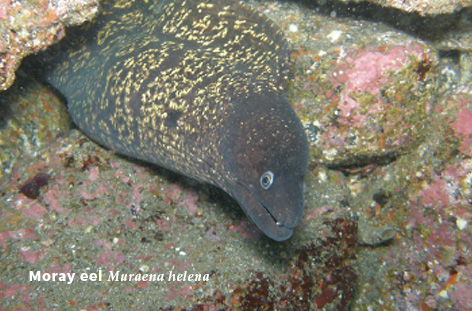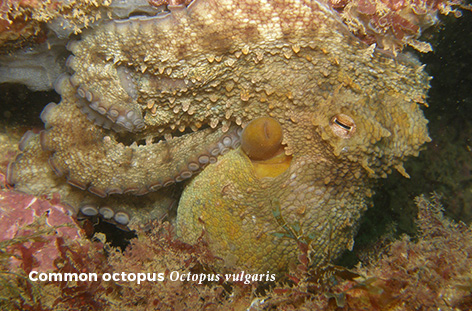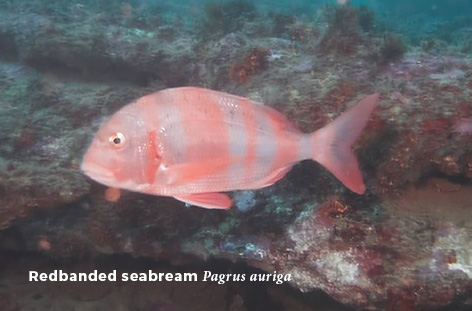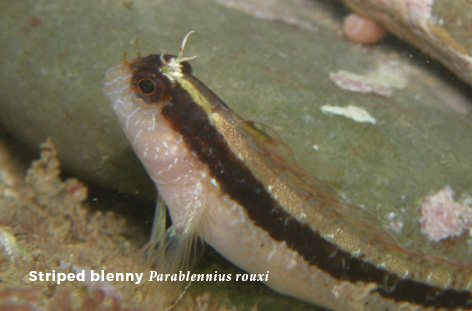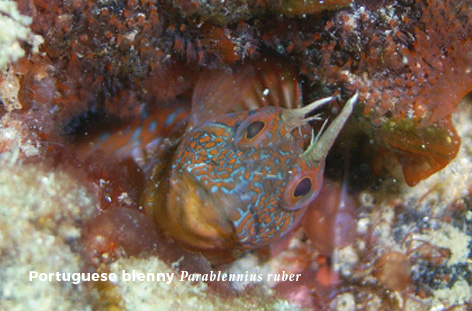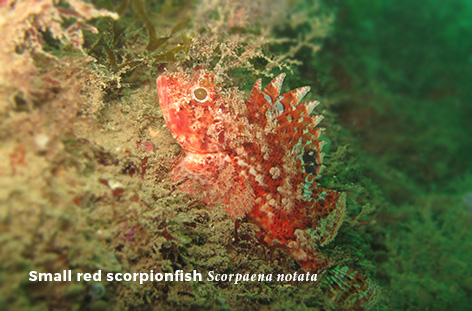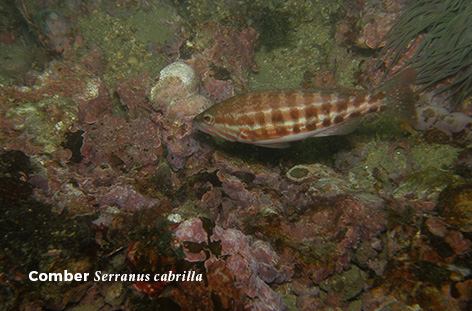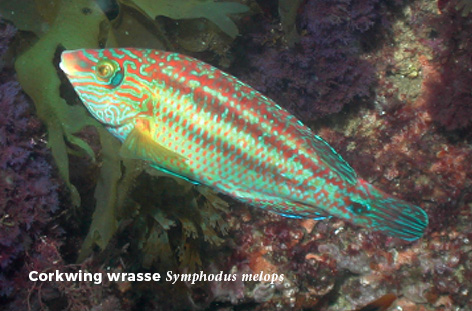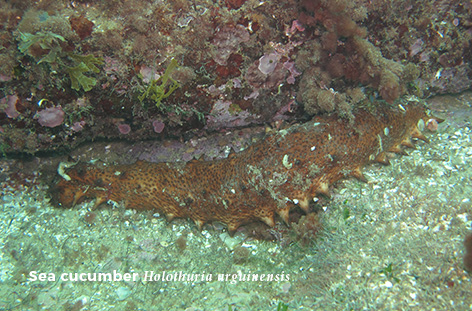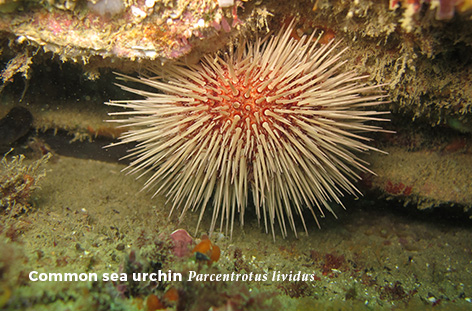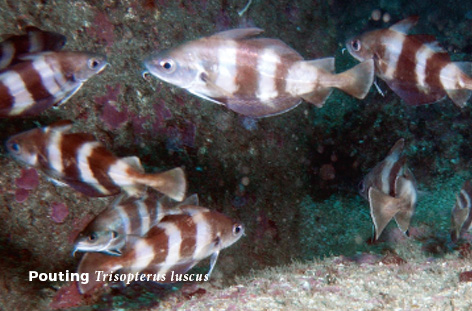“Poço” (Armação de Pera)
This route is located off Armação de Pera. To do the route, the diver must follow the rocky wall that can be seen along the entire trail on the left hand side of the diver.
In zone P.I. sea anemones (e.g. Anemonia viridis)and sea cucumbers (e.g. Holothuria arguinensis) dominate. Also, fish such as zebra seabream (Diplodus cervinus),common two-banded seabream (Diplodus vulgaris) and different species of wrasses (ex. Symphodus spp.) are common.
Following the route, at approximately 30m, a well that appears in the rocky wall can be explored (zone P.II). This area is dominated by pouts (Trisopterus luscus), zebra seabreams (D. cervinus) and black seabreams (Spondyliosoma cantharus).The area also has also a rich variety of nudibranchs (e.g. Felimare cantabrica and Flabellina babai).The occurrence of common octopus (Octopus vulgaris)and pink sea-fans (Eunicella verrucosa) is to be highlighted.
Following the path, the diver will find a rocky outcrop consisting of two islets leaning against the rock wall (zone P.III).In this zone the abundance of sea anemones, scorpionfishes (e.g. Scorpaena notata)and nudibranchs (e.g. Felimare picta)should be stressed.Here, as in the entire route, the fish fauna is diverse, and the presence of pouts and the zebra seabreams is noticeable. The dense macroalgae rocky cover (with species such as Halopteris filicina) must also be emphasized.
Zone P.IV takes the visitor to the interior of the rocky outcrop, where redbanded seabreams (e.g. Pagrus auriga),damselfish, (Chromis chromis)or the Mediterranean rainbow wrasse (Coris julis) can be frequently observed.The landscape is accompanied by high macroalgae variety, as well as sea stars (e.g. Marthasterias glacialis), sea urchins (ex. Paracentrotus lividus)and sea anemones (A. viridis). The frequent presence of the Mediterranean moray (Muraena helena)should also be highlighted.
The diver must now approach a depression entering the rock wall (zone P.V).In this area, the fauna and the flora are particularly luxuriant, with the occurrence of pouts, zebra seabreams, Senegal seabreams (Diplodus bellottii),damselfishes, European congers (Conger conger) and common octopus (O. vulgaris).
Further along the path, the diver will find the “pedra das anémonas” (anemone rock) (zone P.VI),which indicates the end of the route.The name given to this rock is due to the fact that it is literally covered with sea anemones of the species Aiptasia diaphana, (yellow aiptasia), creating a uniquely luxuriant landscape.In this final section of the route, the occurrence of Codium bursa,a green macroalgae with a unique globular appearance must be stressed. Gorgonians (e.g. Leptogorgia sarmentosa)and nudibranchs are also common.
ACESSBoat |
HARBOUR DISTANCE3,7 nautical miles / 15 min. (approx.) |
DIFFICULTYLow |
AVERAGE TIME45/50 min. |
MAX. DEPTH22m |
HABITATRock platform, Sand, Rocky Outcrops, Inlets |
LANDSCAPE INTERESTHigh |
BIOLOGICAL INTERESTHigh |
CONSERVATION
|
SCUBA DIVING |
CERTIFICATIONDiver Level 2 – Autonomous Diver |
NOTESIn the summer season interpretative slates placed near the bottom will guide the divers along the route. |
Conservation
According to the RENSUB, this route is located in one of the richest marine biodiversity areas of the Algarve and should therefore be subjected to specific nature conservation measures.


